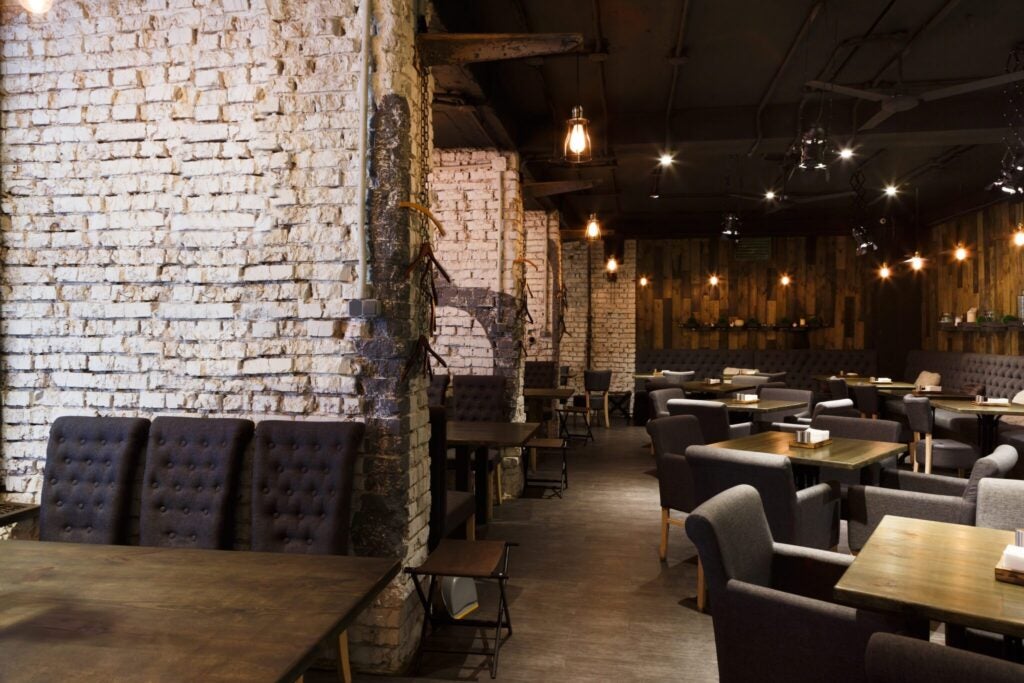Table of contents
Qualify for a Restaurant Line of Credit

1+ Years in Business
$500,000+ in Annual Revenue
Unlike a traditional loan that provides a lump sum amount, a restaurant credit line offers restaurateurs the flexibility to withdraw funds as and when required, only accruing interest on the utilized amount.
This adaptability not only ensures that restaurants can meet unforeseen expenditures but also empowers them to capitalize on sudden growth opportunities.
Whether it’s revamping the interiors, expanding the menu, or even opening a new branch, having a business line of credit in place can be the key to turning these visions into reality. Continue reading for everything you need to know about restaurant lines of credit.

What Is a Restaurant Line of Credit?
A restaurant line of credit is a flexible financing tool that allows restaurant businesses to draw funds up to an approved limit for various operational needs.
Business lines of credit can help restaurant owners cover:
- Unforeseen Expenditures: Cater to unexpected costs such as equipment repair or sudden inventory demands.
- Seasonal Adjustments: Address seasonal variations, ensuring smooth operations during peak and off-peak times.
- Expansion Opportunities: Access funds to explore new ventures, be it launching a new dish or opening a new branch.
- Cash Flow Management: Helps in bridging the gap between payables and receivables, ensuring smooth financial operations.
- Capitalizing on Deals: Allows restaurants to take advantage of bulk purchase discounts or special vendor deals.
- Emergency Situations: Acts as a safety net during unexpected crises, like a pandemic or natural disasters, to keep the business running.
Pros and Cons of Restaurant Line of Credit
| Pros | Cons |
|---|---|
| Flexibility: Draw funds only when needed and pay interest on the utilized amount, not the entire credit limit. | Variable Interest: Rates may fluctuate, which can lead to unpredictable costs. |
| Cash Flow Management: Helps bridge gaps between payables and receivables, ensuring smooth business operations. | Fees and Charges: Potential for annual fees, draw fees, or maintenance fees. |
| Supports Growth: Ready capital for expansion opportunities, from menu diversification to opening new branches. | Risk of Over-borrowing: Easy access can tempt business owners to borrow more than needed. |
| Builds Credit: Regular repayment can improve the restaurant’s credit profile. | Collateral: Some lines might require collateral, putting assets at potential risk. |
| Crisis Management: Access to funds during unexpected setbacks, ensuring business continuity. | Renewal Challenges: Not always automatically renewed; financial reviews might be necessary. |
| Seasonal Adjustments: Efficiently manage seasonal demand fluctuations. | Minimum Draw Requirements: Some lenders might set a minimum amount for each withdrawal. |
How Can You Use Your Restaurant Line of Credit Funds?
Restaurant owners can use a restaurant line of credit for:
- Inventory Purchase: Stock up on essential ingredients during peak seasons. Invest in specialty items for limited-time menus.
- Equipment and Renovations: Upgrade kitchen appliances for improved efficiency. Renovate dining areas for a refreshed ambience.
- Staffing: Hire additional staff for busy periods or special events. Provide training programs to upskill current employees.
- Marketing and Promotions: Launch marketing campaigns to attract new clientele. Sponsor local events or festivals for brand visibility.
- Expanding Operations: Open new branches or food outlets. Explore opportunities in catering services or delivery.
- Liquidity and Cash Flow: Bridge the gap between payables and receivables. Address unexpected shortfalls or financial emergencies.
- License and Compliance: Renew necessary business licenses. Implement changes to comply with health or safety regulations.
- Seasonal Adjustments: Prepare for seasonal fluctuations by investing in décor, special menus, or events.
- Debt Consolidation: Consolidate multiple outstanding debts into one for easier management.
- Tech Integration: Implement a new Point of Sale (POS) system. Develop or upgrade the restaurant’s website and online ordering system.
What Factors Influence Restaurant Lines of Credit?
When considering a Restaurant Line of Credit (LOC), it’s crucial to weigh several factors to ensure you make a well-informed decision that aligns with your establishment’s goals.
Factors to consider when taking a restaurant line of credit:
- Interest Rates: Understand the interest rates associated with your LOC. Rates can be fixed or variable; it’s essential to know how these rates might affect your repayment over time.
- Repayment Terms: Familiarize yourself with the repayment structure. This includes the duration, flexibility in repayment, and penalties for late or missed payments.
- Fees and Charges: Be aware of any additional fees like origination, maintenance, or transaction fees. This will prevent any unexpected costs later on.
- Credit Limit: Determine if the offered credit limit meets your business needs. Having access to more funds than required can lead to overspending.
- Usage Flexibility: Ensure that there aren’t any stringent restrictions on how you can use the funds. A good LOC should cater to a variety of business needs.
- Draw Period: Check the duration of the draw period — the time during which you can access funds. Ensure it aligns with your projected financial needs.
- Collateral Requirements: Some LOCs might require collateral as a security. Know what assets you may need to pledge and understand the risks associated with it.
- Provider Reputation: Research the reputation of the LOC provider. Reviews, testimonials, and feedback can give insight into their reliability and customer service.
- Renewal Process: Understand the terms of renewal. Some LOCs renew automatically, while others might require a reevaluation of your financial status.
- Financial Health Assessment: Regularly assess your restaurant’s financial health. Even with access to a LOC, ensure you’re not borrowing more than you can repay.
- Future Needs Forecast: Anticipate future needs. While current requirements are essential, consider potential expansions, renovations, or other big-ticket expenditures that might arise.
How Do Lenders Determine Eligibility for a Restaurant Line of Credit?
Qualifying for a Restaurant Line of Credit (LOC) often entails meeting specific criteria set by lenders to ensure the borrower can repay the funds.
- Business Duration – Lenders often prefer establishments that have been in business for a specific time, e.g., at least 1-2 years. It reflects stability and reduces risk.
- Credit Score – Both personal and business credit scores might be evaluated. A higher score typically increases the chances of approval and might fetch better interest rates.
- Monthly Revenue – Lenders want to see a consistent revenue stream. This indicates the restaurant’s capability to repay the borrowed amount. Minimum monthly revenues might be specified.
- Operational Consistency – Seasonal operations or inconsistent opening hours might be seen as risky. Regular operations often reflect better financial stability.
- Outstanding Debts – If the restaurant has significant outstanding debts, it might reduce the chances of approval. Lenders evaluate the debt-to-income ratio to assess repayment capabilities.
- Collateral – Some LOCs are secured, requiring collateral like equipment or property. Understand the collateral requirements, if any.
- Financial Statements – Lenders might request profit & loss statements, balance sheets, and cash flow statements to gain a comprehensive understanding of the restaurant’s financial health.
- Business Plan – Some lenders require a clear business plan, especially for newer restaurants. This plan should outline growth strategies, expected revenues, and other financial projections.
- Legal Documentation – Ensure all business licenses, permits, and certifications are up-to-date. Lenders might want to verify the restaurant’s legal status and compliance with local regulations.
- Bank Statements – Lenders might request recent bank statements, usually from the past 3-6 months, to evaluate the cash flow and financial transactions of the restaurant.
- Personal Guarantee – Some lenders might require business owners to provide a personal guarantee. This means the owner is personally liable if the restaurant fails to repay the LOC.
How To Apply for Restaurant Line of Credit
Applying for a restaurant line of credit is as simple as finding a lender and filling out an application. Getting the most competitive offer available, however, isn’t as straightforward.
Here are the steps you’ll follow if applying with lenders individually.
- Research Multiple Lenders: Different lenders offer varying terms, interest rates, and fees. Consider both traditional banks and online lenders.
- Check Eligibility Criteria: Ensure you meet the basic qualifications, such as business duration, credit score, and monthly revenue.
- Gather Necessary Documentation: Collect financial statements, business licenses, and other relevant paperwork. Prepare a business plan, especially if you’re a newer establishment.
- Complete the Application: Fill out the lender’s application form. Online lenders typically offer digital forms for quicker processing.
- Provide Collateral Details (If Required): Some LOCs are secured and need details about the asset(s) you’re using as collateral.
- Submit Financial Records: Provide bank statements, profit & loss statements, and other financial records for review.
- Wait for Approval: Traditional banks might take a few weeks; online lenders can offer decisions within days or even hours.
- Review Offer: If approved, you’ll receive an offer detailing the credit limit, interest rate, fees, and other terms.
- Negotiate (If Necessary): If you feel the terms aren’t favorable, try negotiating with the lender for better conditions.
- Sign the Agreement: Once satisfied with the terms, sign the credit agreement to formalize the line of credit.
- Access Funds: Once the LOC is established, draw funds as needed up to the approved credit limit.
- Stay Updated: Regularly review your LOC terms. Understand the repayment schedule, interest accrual, and any associated fees.
All of this requires time, effort, and patience. At National Business Capital, you can unlock the most competitive offers you qualify for with one application.


